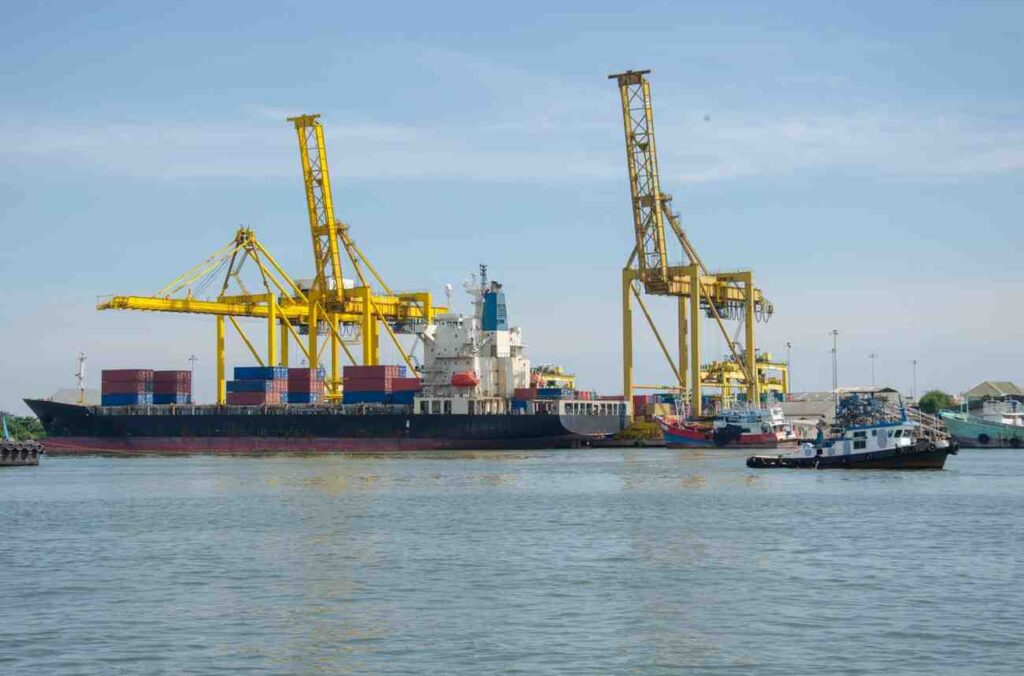
What Is Inbound Logistics & Outbound Logistics? A 2025 Guide
In the dynamic world of supply chain management, understanding the nuances of inbound and outbound logistics is crucial for operational

In the complex world of international trade, staying ahead of the curve on compliance and security is vital. One integral part of this puzzle is keeping a watchful eye on your Importer Security Filing (ISF) status. The ability to effortlessly track the progress of your ISF filings can save you from potential headaches, delays, and penalties. Therefore, let’s address the process of how to check the filing status.
In this blog, we will delve into the significance of routinely checking your ISF filing status and introduce you to a remarkable ally: Artemus‘ Software Solution. Discover how Artemus’ ISF software can be your trusted companion in efficiently managing and monitoring your ISF status, ensuring your global shipments arrive at their destinations seamlessly and without complications.
Table Of Contents
To check the status of your Importer Security Filing (ISF), there are a few straightforward methods to consider. First, if you’ve enlisted the services of a customs broker, they can provide you with real-time updates on the filing’s status.
Additionally, you can use the Automated Commercial Environment (ACE) portal provided by U.S. Customs and Border Protection (CBP). By logging into the ACE portal, you can access information about your ISF, including its current status. Ensure you have the necessary information, such as your bill of lading or entry number, to input into the system.
Finally, you can also reach out to CBP directly through their designated contact channels to inquire about the status of your ISF filing. These methods offer valuable ways to stay informed and compliant throughout the import process.
Related: ISF Late Filing Fee: Exact Cost & 6 Tips To Manage Appeals
Understanding ISF status messages is pivotal for importers and customs compliance. In this guide, we will demystify the meanings behind ISF status messages and outline the necessary actions required to ensure a smooth international trade process.
1. “Accepted”: This status indicates that your ISF filing has been successfully received and processed by U.S. Customs and Border Protection (CBP). No immediate action is required.
2. “Rejected”: If your ISF is rejected, it means there are errors or missing information. You must review the rejection message carefully, correct the issues, and resubmit the filing.
3. “Pending”: A “Pending” status suggests that CBP is still processing your ISF. It’s essential to monitor it regularly, as further actions might be necessary depending on CBP’s feedback or requests for additional information.
4. “Hold” or “Exam Hold”: If your ISF is placed on hold, CBP may be conducting additional inspections or reviewing your submission. You should be prepared for potential delays and remain in contact with CBP or your customs broker.
5. “Cancelled”: A “Cancelled” status typically means that the ISF filing is no longer required due to changes in your shipping plans. In such cases, you should update your records accordingly.
6. “Amended”: An “Amended” status indicates that you’ve made changes to your ISF after the initial submission. Ensure that the amendments align with CBP regulations and requirements.
7. “No Bill Found”: This message suggests that the bill of lading information provided in your ISF does not match the CBP records. Verify the bill of lading details and resubmit if necessary.
Interpreting ISF status messages correctly allows you to take appropriate actions, ensuring compliance with customs regulations and smooth import operations. Regularly monitoring the status and promptly addressing any issues is key to a successful import process.
Related: ISF Bond Cost Breakdown & Management For Import Success
Regularly checking ISF (Importer Security Filing) status offers numerous advantages for importers and supply chain management. It ensures compliance with customs regulations, minimizes costly delays and enhances overall operational efficiency. Discover the multifaceted benefits of consistently monitoring your ISF filings to optimize your international trade processes.
Regularly checking your ISF status ensures that you are in compliance with the U.S. Customs and Border Protection (CBP) regulations. Non-compliance can lead to fines, penalties, and delays in your shipments. By staying up-to-date with your ISF filings, you can avoid these issues and maintain a good relationship with customs authorities.
Monitoring your ISF status allows you to identify and address any discrepancies or errors in your filings promptly. This helps prevent costly delays or disruptions in your supply chain. Early detection of issues enables you to rectify them before your goods arrive at the U.S. port, ensuring a smoother and more efficient import process.
Regularly checking your ISF status can help you optimize your import operations and potentially reduce costs. By staying informed about filing deadlines and requirements, you can avoid rush filings, which are often more expensive. Additionally, identifying and addressing issues early can prevent costly fines and storage fees.
ISF status checks contribute to better risk management in international trade. You can assess potential risks associated with your shipments and take proactive measures to mitigate them. This includes evaluating the accuracy of your ISF data, monitoring changes in customs regulations, and staying updated on security threats that may impact your cargo.
Regular ISF status monitoring provides greater visibility into your supply chain. You can track the progress of your shipments and anticipate any potential bottlenecks or delays. This enhanced visibility enables you to make informed decisions, such as adjusting inventory levels or optimizing transportation routes, to ensure efficient supply chain operations.
In summary, regularly checking your ISF status is essential for ensuring compliance, resolving issues promptly, reducing costs, managing risks, and enhancing the overall visibility and efficiency of your international trade operations. It’s a proactive practice that can lead to smoother import processes and better financial outcomes.
Related: Late ISF Filing: What To Do If Missed The Deadline?
Effective ISF (Importer Security Filing) status monitoring is crucial for smooth international trade operations. To ensure compliance and minimize risks, here are five best practices to guide you in monitoring ISF status efficiently and proactively.
Implement automated systems or software that can generate alerts and notifications for important ISF-related milestones, such as filing deadlines, status updates, and any customs holds or issues. This ensures that you are always aware of the current status of your shipments without having to manually check each one.
Periodically review and update the ISF data for your shipments. Ensure that all information is accurate and up-to-date, including bill of lading details, consignee information, and product descriptions. Timely data correction can prevent delays and customs-related problems.
Keep a centralized and organized record of all your ISF filings and related documents. This can include filing confirmation receipts, customs correspondence, and compliance records. Having a central repository makes it easier to access historical data and track the progress of each filing.
Clearly define roles and responsibilities within your organization or among your partners involved in the import process. Assign specific individuals or teams to oversee ISF status monitoring, filings, and issue resolution. Having a designated point of contact for ISF-related matters ensures accountability and swift action when needed.
Stay updated on changes in customs regulations and security requirements. Customs laws can evolve, and new rules may be introduced. Regularly review guidance from customs authorities and industry publications to ensure that your ISF practices remain compliant with current standards.
Related: When Does ISF Need To Be Filed? Know The Deadline
Automated tools play a pivotal role in streamlining and improving the process of Importer Security Filing (ISF) status monitoring and filing. These tools offer several benefits, such as real-time tracking of filing deadlines and updates, ensuring data accuracy through validation checks, and providing automated notifications for customs holds or discrepancies.
Additionally, they can integrate with your supply chain management systems, enabling seamless data exchange and reducing manual data entry errors. Overall, automated tools enhance efficiency, reduce the risk of compliance issues, and save time and resources by simplifying the complex ISF filing process.
Related: ISF Filing Process: A Detailed Step-By-Step Guide
Artemus’ ISF software solution is a valuable asset in effectively managing Importer Security Filing (ISF) status. It simplifies the entire process by automating the tracking of filing deadlines, ensuring data accuracy through rigorous validation checks, and generating real-time notifications for any customs holds or discrepancies.
The ISF software seamlessly integrates with existing supply chain management systems, facilitating data exchange and reducing the risk of manual data entry errors. Moreover, it offers comprehensive reporting and analytics, providing valuable insights into your import operations and helping you make informed decisions.
Ultimately, the ISF software solution enhances compliance, efficiency, and visibility in ISF filings, contributing to smoother international trade operations and reduced compliance-related risks.
Related: Who Is Responsible For Filing The ISF? Know The Key Roles
“ISF on file” means that the Importer Security Filing (ISF) for a particular shipment has been successfully submitted and recorded with customs authorities.
Filing an Importer Security Filing (ISF) typically takes a few minutes to complete online, but it should be done at least 24 hours before the goods are loaded onto the vessel bound for the United States to avoid potential penalties or delays.
No, Importer Security Filing (ISF) is not required for air shipments to the United States; it is primarily associated with ocean freight.

In conclusion, checking your ISF (Importer Security Filing) status is a crucial step in ensuring smooth and compliant international trade operations. By following the simple steps outlined in this blog, you can stay informed about the status of your ISF filing, and whether it’s been submitted correctly and on time. This proactive approach helps you avoid potential delays, penalties, and complications in your global supply chain.
Remember that compliance is key when it comes to international trade, and staying on top of your ISF filing status is just one of the many responsibilities that come with it. So, keep monitoring your ISF status, and you’ll be better prepared to navigate the complexities of global trade successfully.
Related: What Is ISF Bond? Types, Cost, & Components To Know

In the dynamic world of supply chain management, understanding the nuances of inbound and outbound logistics is crucial for operational

In today’s interconnected world, businesses rely heavily on global trade to expand their markets, access new resources, and drive growth.

Importing goods for resale in the USA presents a lucrative business opportunity, but navigating the complexities of U.S. customs regulations,
Get In Touch
Artemus’ Software Solutions for ISF, AMS, Japan AFR, eManifest Canada, & Panama B2B filings.